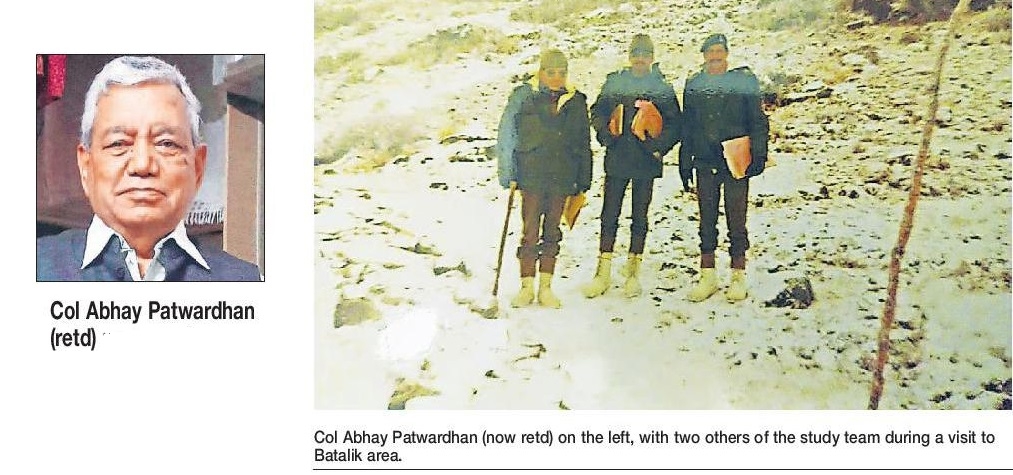25 Yearsof Kargil Victory A Recall ‘We have come a long way, positively’
| Date :19-Jul-2024 |

By Kartik Lokhande :
The team visited
the war zone to study all the
aspects and
submit a report for formulation of future strategy of very high altitude warfare as future doctrine.
The Kargil War of 1999 is said to be a
chapter of military success from surprise to victory. However, it was not by chance that the element was surprise was gotten over with, and path was paved for victory. Quickly recovering from the surprise, the Indian Army acted swiftly, conducted a proper study of the area, came up with a proper plan, and then fought to ensure
victory. And, this success has a Nagpur
connection too.
Col Abhay Patwardhan, a Nagpurian, was among the members of the team that conducted study of the war zone. When the war broke out in May 1999, the Defence Services Staff College (DSSC) sent an eight-member team, which Col Patwardhan was a part of. “We visited the war zone in May-June 1999 to study the level of preparation, actions being taken by commanders at various levels, how they tackled the situation, and how the force commander could manage the psychology of soldiers since over 40,000 soldiers had come from peace locations,” recalls Col Patwardhan (retd) while talking to ‘The Hitavada’.
The team visited the war zone to study all these aspects and submit a report for formulation of future strategy of very high altitude warfare as future doctrine. At times, he recalls, fighting commanders at ground level -- being junior to the study team members -- used to consult them.
When the Kargil War of 1999 started, he was an instructor at the Defense Services Staff College, Wellington. About 38 infantry battalions (1,000 soldiers per battalion) were deployed in the Kargil War. The mission of the study team sent by DSSC was to prepare the first-hand report of the complex activities/operations on the world’s highest battlefield, draw lessons in high-altitude warfare, conduct psychological analysis of how and why soldiers’ confidence, morale and complete faith in the tactical decisions of the commanders remained steadfast throughout the war.
As a member of the team sent to report on the Kargil War, Col Patwardhan was able to have first-hand experience in combat engagement and strategic operations in the field. In those two months, the DSSC study team saw war strategy planning and corresponding military operations, use of military technology in war, various tactics adopted by the three forces, strategic weapons and logistics supply replenishment. Based on the observations, the team submitted its report and recommendations to the appropriate authorities for taking further actions.
The study team visited different sectors, identified plus points and drawbacks, and made suggestions.
According to Col Patwardhan, “It was necessary to do so. For, except 1962, we had never fought at such high altitudes. The inferences we drew and suggestions we made were for future deployment of drones for reconnaisance, use of Bofors guns in direct fire and pounding of enemy-held locations, air power deployment, and certain changes in the command and control structure.”
Asked as to what secured victory for India in 1999, Col Abhay Patwardhan replied that there were several factors. To name a few, these included effective use of advanced technology including drones for surveillance, co-ordinated communication between various units and forces, particularly the artillery
and infantry leading to strategic synchronisation of
solid, fast and effective military operations, securing satellite communication s
ystems, bravery of soldiers, and the spirit of nationalism across the country boosted the morale of the forces.
If the war in 1999 brought the nation together across spectrum, several changes and reforms have taken place as far as defence is concerned.
Many positive changes have taken place. These positive changes have taken place following certain reforms and key decisions including creation of the post of the Chief of Defence Staff (CDS), and action on the recommendations of Kargil Review Committee led by K Subrahmanyam, and the committee led by Lt Gen D B Shekatkar regarding tip-to-tail ratio and reorganisation of the Indian Army.
Now, the country is celebrating the Silver Jubilee of the Indian victory over Pakistan in Kargil War of 1999. How is the situation after 25 years since Kargil War of 1999?
Col Patwardhan answers confidently, “Well, it is stable.”
According to him, Pakistan and China cannot come to Siachen, and they cannot separate Ladakh region from rest of India now because Indian forces are guarding the important route. The light tanks like Zorawar, once inducted, will provide more teeth to Indian defence because of their maneuverability in valleys. “In every aspect and respect, we have come a long way in a positive sense,” he concludes.